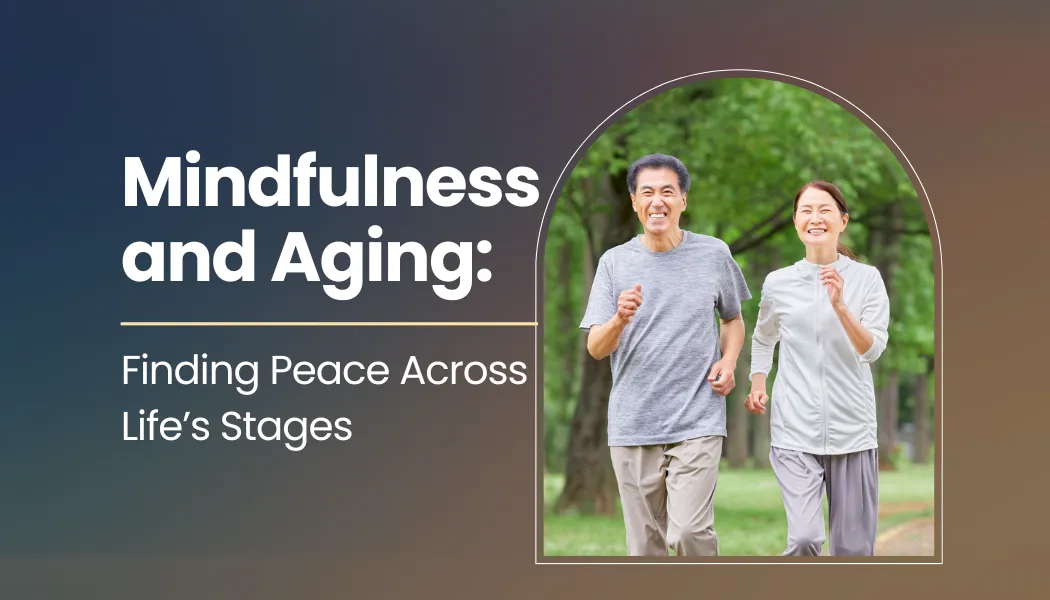Aging is often seen as a journey filled with both beauty and challenge. Each stage of life—from young adulthood to the golden years—brings with it unique experiences, responsibilities, and reflections. For many, aging carries the weight of physical changes, shifting identities, and sometimes fears of decline. Yet, it also brings wisdom, perspective, and opportunities for deeper connection with oneself and others.
In recent years, mindfulness has emerged as a powerful tool to navigate this journey with grace. More than a passing wellness trend, mindfulness is the practice of bringing one’s attention to the present moment with openness and compassion. It offers a pathway to accept life’s transitions, manage stress, and cultivate peace regardless of age.
This article explores how mindfulness supports aging across different life stages—highlighting its benefits for mental, emotional, and physical well-being. It’s not about resisting age but about embracing it fully, finding meaning in the process, and discovering peace at every turn.
Table of contents
- The Link Between Mindfulness and Aging
- Mindfulness Across Life’s Stages
- Scientific Insights into Mindfulness and Aging
- Mindfulness as a Bridge Between Generations
- Simple Daily Mindfulness Practices for All Ages
- The Spiritual Dimension of Mindful Aging
- Challenges in Practicing Mindfulness Across Ages
- Why Mindfulness and Aging Belong Together
- Conclusion
The Link Between Mindfulness and Aging
Aging, by its very nature, is about change. Bodies evolve, roles shift, and priorities transform. Where once life was about building careers and families, later years may focus on reflection, contribution, or simply being. These changes can create both anxiety and growth.
Mindfulness acts as a grounding force in this journey by:
- Reducing stress and anxiety about the future or regrets about the past.
- Enhancing resilience when facing health challenges, loss, or transitions.
- Encouraging acceptance of physical and emotional changes.
- Promoting presence in joyful moments that might otherwise pass unnoticed.
- Supporting cognitive health by sharpening attention and memory.
The research is compelling: regular mindfulness practice has been linked to lower blood pressure, improved emotional regulation, decreased loneliness, and even slower cellular aging. It helps people not only live longer but live with more vitality and purpose.
Mindfulness Across Life’s Stages

1. Young Adulthood: Building Foundations
In the early stages of adulthood, life often feels like a whirlwind of responsibilities—education, career beginnings, relationships, and identity formation. Stress and uncertainty are common, with the mind frequently pulled toward “what’s next.”
How mindfulness helps:
- Encourages focus on the present, preventing burnout from constant planning.
- Strengthens self-awareness, aiding in decisions about career and relationships.
- Cultivates compassion, reducing the harsh self-criticism that many young adults experience.
Practice to try:
A daily grounding meditation. Spend 5 minutes noticing your breath and silently repeating, “This moment is enough.” It helps anchor attention during hectic days.
2. Midlife: Balancing Roles and Transitions
Midlife often brings new challenges—balancing careers, family, financial responsibilities, and sometimes caring for both children and aging parents. It can also spark a sense of reevaluation, often called a “midlife crisis,” where individuals question purpose and fulfillment.
How mindfulness helps:
- Offers perspective, allowing individuals to step back from constant doing and reconnect with being.
- Eases the stress of multitasking and role overload.
- Helps in accepting changes—such as children leaving home or evolving professional identities.
- Builds gratitude for achievements while releasing regrets of “what might have been.”
Practice to try:
Mindful transitions. Before moving from one role to another—like work to home—pause, take three breaths, and consciously release the tension of the previous space.
3. Later Adulthood: Embracing Change and Wisdom
The later stages of life can bring profound change—retirement, shifts in social circles, physical decline, or the loss of loved ones. But it also offers a chance to savor freedom, deepen relationships, and focus on what truly matters.
How mindfulness helps:
- Encourages acceptance of the body’s natural changes with compassion instead of frustration.
- Supports mental health, reducing loneliness and fear of mortality.
- Enhances joy in simple, present-moment experiences—like a walk in nature, shared laughter, or savoring a meal.
- Fosters a sense of spiritual connection and inner peace.
Practice to try:
Gratitude journaling. Each evening, note three things you are grateful for. This rewires the mind to focus on abundance rather than loss.
4. End of Life: Cultivating Peace
As life draws toward its natural close, mindfulness becomes a profound companion. It doesn’t erase fear or grief, but it offers a way to face them with courage and equanimity.
How mindfulness helps:
- Encourages presence in each remaining moment, turning ordinary days into meaningful experiences.
- Supports pain management through breathing practices and body awareness.
- Reduces fear by fostering acceptance of impermanence.
- Strengthens connections with loved ones through mindful listening and presence.
Practice to try:
Loving-kindness meditation. Repeat silently: “May I be at peace. May I be free from suffering. May all beings be at peace.” This practice nurtures compassion and reduces fear.
Scientific Insights into Mindfulness and Aging
Research has shown that mindfulness positively impacts aging in multiple ways:
- Brain health: Studies using MRI scans reveal that older adults who practice mindfulness have more gray matter density in regions related to memory and emotional regulation.
- Stress hormones: Mindfulness reduces cortisol levels, which are linked to accelerated aging.
- Cellular aging: Telomeres, protective caps on DNA strands, shorten with age and stress. Mindfulness practices are associated with longer telomeres, suggesting slower biological aging.
- Immune function: Mindfulness boosts immunity, helping older adults fight infections and recover more quickly from illness.
These findings reinforce what practitioners often feel firsthand: mindfulness makes aging not only easier but richer and more meaningful.
Mindfulness as a Bridge Between Generations
Mindfulness also connects generations. Parents practicing mindfulness model healthier coping for their children. Older adults who engage in mindfulness often pass down wisdom about presence and patience to grandchildren. Group meditation sessions in community centers or family circles create shared experiences, fostering compassion across age divides.
In this way, mindfulness doesn’t just support individual aging—it builds resilient, compassionate communities.
Simple Daily Mindfulness Practices for All Ages
- Mindful Breathing: Pause several times a day to take three slow, intentional breaths.
- Body Scan: Gently notice sensations in each part of the body, releasing tension.
- Mindful Eating: Eat slowly, savoring flavors and textures.
- Walking Meditation: Pay attention to the rhythm of each step and the feel of the ground beneath you.
- Digital Breaks: Take mindful pauses from screens, simply noticing your surroundings.
These practices, though simple, create cumulative benefits when integrated into daily routines.
The Spiritual Dimension of Mindful Aging
Beyond physical and psychological benefits, mindfulness deepens the spiritual experience of aging. Many traditions view aging as a sacred passage—a time to shift from ambition to wisdom, from doing to being. Mindfulness aligns with this transition, guiding people toward acceptance, interconnectedness, and peace.
By sitting with silence, embracing impermanence, and cultivating compassion, older adults often report a greater sense of meaning and connection with life as a whole.
Challenges in Practicing Mindfulness Across Ages
While mindfulness offers profound benefits, it’s not without challenges:
- For younger adults: Restlessness and distraction can make practice difficult.
- For midlife adults: Time constraints and busy schedules may hinder consistency.
- For older adults: Physical discomfort may limit traditional meditation postures.
The key is adaptability—mindfulness doesn’t need to look the same at every stage. For some, it may be sitting in meditation; for others, mindful gardening, journaling, or simply savoring a conversation.
Why Mindfulness and Aging Belong Together
Aging is not a problem to be solved but a process to be experienced fully. Mindfulness teaches us to approach each stage with openness rather than resistance, compassion rather than judgment, and presence rather than regret.
By practicing mindfulness, aging becomes less about decline and more about deepening—deepening awareness, gratitude, connection, and peace.
Conclusion
From the restless days of young adulthood to the reflective moments of later life, mindfulness is a steady companion. It helps us manage stress, embrace change, and savor joy at every stage. As science affirms its benefits and traditions highlight its wisdom, mindfulness emerges not just as a practice but as a way of aging gracefully.
In a culture often obsessed with youth and fearful of growing older, mindfulness reminds us of a profound truth: every moment of life, at every age, is an opportunity for peace.
